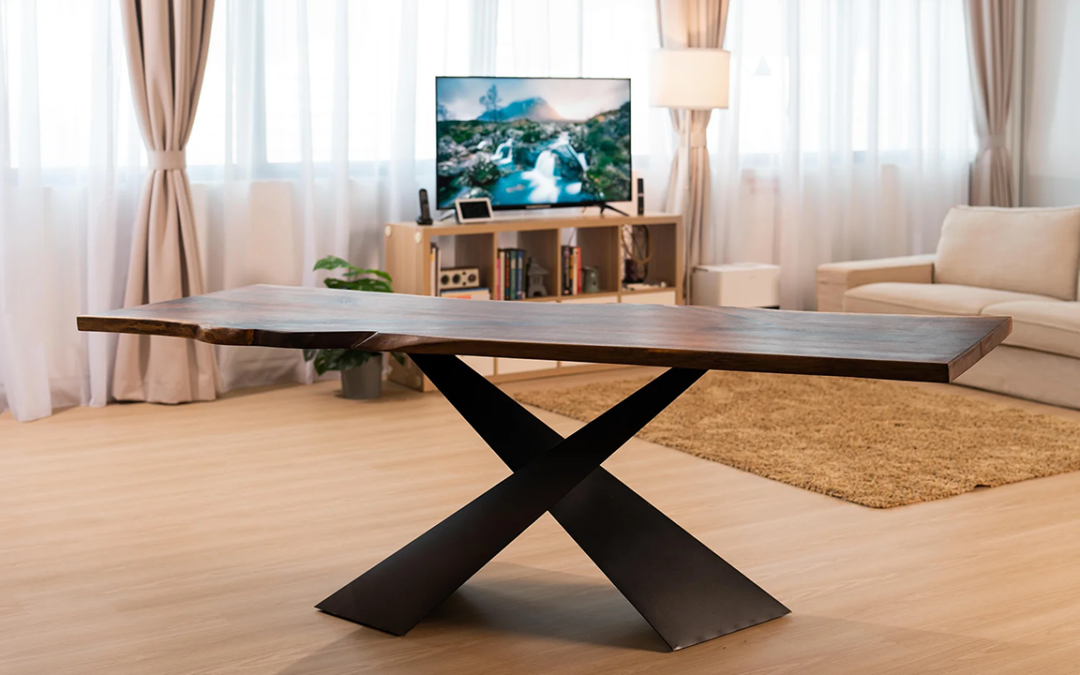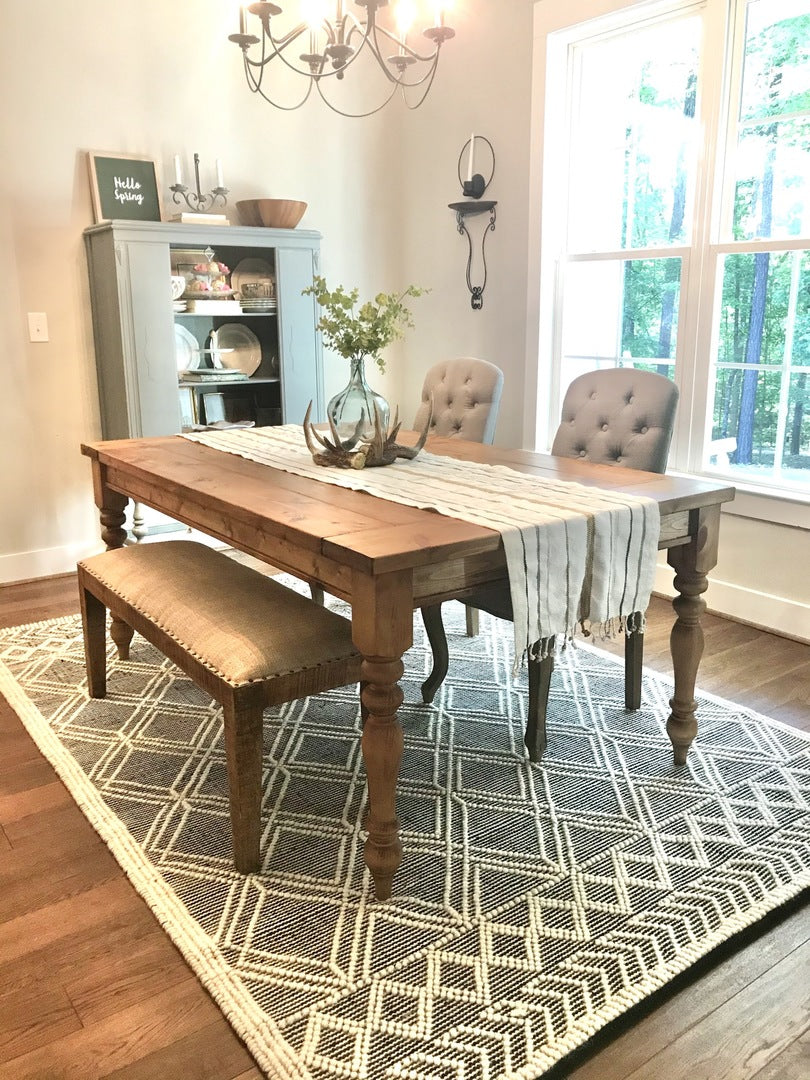Choosing the Perfect Table: What Styles Job Best for Your Home?
Selecting the excellent dining table for your home can be a nuanced procedure that stabilizes aesthetics and performance. Whether your area leans in the direction of standard style, contemporary minimalism, rustic charm, or commercial elegant, the selection of designs available can satisfy diverse tastes. Each style uses special benefits and challenges that can either boost or interrupt your dining area's consistency. Comprehending exactly how different materials, shapes, and dimensions connect with your existing design is important. To browse these choices properly and locate a table that absolutely matches your home, think about the complying with facets thoroughly.
Evaluating Your Area
Examining the measurements and format of your dining location is a critical primary step in choosing the best table. Begin by determining the length and width of the space, making up entrances, home windows, and other architectural functions that could influence table positioning. This guarantees that your table not just fits yet likewise permits comfortable motion around it.
Take into consideration the number of individuals you generally entertain. A table ought to fit your family's day-to-day needs while using adequate adaptability for occasional visitors. As a guideline of thumb, designate at least 24 inches of table width each to make certain a comfortable eating experience.
It's additionally vital to keep appropriate clearance around the table. Preferably, there ought to be at the very least 36 inches in between the table edge and walls or various other furnishings, allowing simple gain access to and movement. For spaces where chairs with arms or added storage space devices like buffets are included, raising this clearance to 48 inches is a good idea.
Illumination and environment play substantial duties. Make certain that your table lines up with existing lights components or prepare for adequate lights solutions. This thorough spatial assessment guarantees that your dining table not only fits literally but additionally integrates with your space's general functionality and visual.
Popular Table Styles

Standard table usually feature ornate information, curved legs, and rich timber coatings, stimulating a sense of timeless style. They are excellent for homes with traditional decoration or those wanting to add a touch of refinement to their eating location.
Modern eating tables prioritize simplicity and clean lines, typically integrating products like glass and metal. These tables are perfect for contemporary areas, supplying a streamlined and uncluttered appearance that matches minimalist layout viewpoints.
Rustic dining tables, on the other hand, highlight all-natural materials and a handcrafted appearance - dining room table legs. They commonly include redeemed timber and a distressed coating, creating a cozy and inviting environment. These tables work well in farmhouse-style homes or those looking for a cozy, natural feeling
Industrial dining tables incorporate basic materials such as metal and timber, often showcasing a practical aesthetic. This style is well-suited for lofts or urban areas, including a touch of tough charm and sturdiness to the eating experience.
Each design supplies unique benefits, making it important to select one that lines up with your home's overall layout and your individual preferences.
Material Options
When choosing a table, the option of material plays a vital role in establishing both the table's looks and functionality. Wood, metal, glass, and composite products each offer my sources one-of-a-kind benefits and difficulties, making it vital to align the material with your home's decoration and way of life demands.
Wood is a classic and flexible choice, available in selections such as oak, walnut, and mahogany. Recognized for its sturdiness and warmth, timber enhances both typical and modern insides. It calls for regular maintenance to avoid scratches and bending.
Steel tables, often crafted from stainless-steel, light weight aluminum, or wrought iron, are applauded for their contemporary allure and toughness. They are specifically matched for commercial or minimal settings yet can be vulnerable to damages and may really feel cold to the touch.
Glass eating tables bring an air of elegance and openness, ideal for smaller sized areas as they develop an illusion of more room. While very easy to clean, glass can be prone to smudges and requires cautious taking care of to avoid chips and fractures.
Composite materials, such as MDF and plywood, deal affordable and personalized solutions, though they might lack the durability of natural materials. Selecting the ideal material guarantees your eating table is both a practical property and an aesthetic delight.
Shape and Dimension Factors To Consider
After figuring out the proper material for your table, the next factor to consider is choosing the best sizes and shape to match your room. The shape of the table dramatically affects the space's visual and functionality. Rectangular tables, one of the most usual shape, are excellent for bigger rooms and can suit a higher number of guests. They additionally permit a much more official dining experience. Alternatively, round tables foster a feeling of intimacy and are superb for smaller sized eating areas, motivating discussion by eliminating edges and making everyone really feel just as consisted of.
Dimension is similarly crucial and must be determined by both the room's dimensions and the number of individuals you intend to seat routinely. Generally of thumb, designate at the very least 24 inches of table size each to ensure comfy dining. Additionally, think about the table's clearance area: there need to be at the very least 36 inches in between the table side and the wall surfaces or various other furnishings. This guarantees that diners can move conveniently without feeling cramped. Expanding tables provide adaptability if you frequently host bigger events, giving added seating when required without occupying additional room daily. Choosing the appropriate sizes and shape guarantees both usefulness and aesthetic harmony in your dining area.
Matching Your Style
Picking an eating table that harmonizes with your existing decoration is crucial in developing a cohesive and inviting area. Begin by evaluating your existing indoor design style, whether it be modern, typical, rustic, or diverse. The table need to enhance the total visual, not compete with it. As an example, a smooth, minimal table with tidy lines is excellent for a modern home, while a vintage, elaborate table matches a more standard setting.
If your style includes cozy tones and all-natural products, take into consideration a wood table to boost the organic find this feeling. Alternatively, a glass or steel table might be a lot more suitable in a space dominated by amazing shades and industrial elements.
A rough-hewn, recovered wood table can include personality to a rustic area, while a sleek marble surface area can elevate an extravagant dining area. A well-matched dining table not just enhances visual allure yet also improves the total eating experience.

Verdict
Selecting the perfect eating table necessitates mindful factor to consider of area, style, materials, form, and size. Standard tables complement timeless read the article interiors with rich timber finishes, while modern tables match contemporary settings with glass and metal.